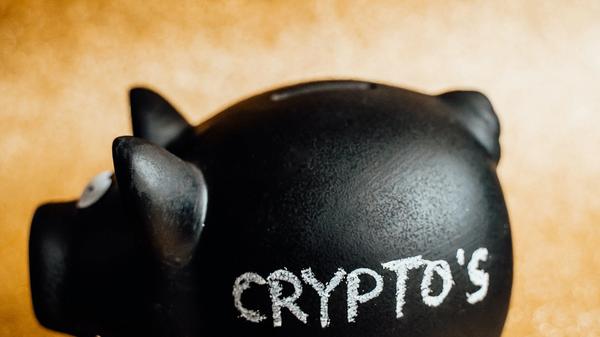As an investor it is important to read about the companies you invest in.
This includes a company’s financial statements, annual reports along with the stock’s performance report.
Among several financial ratios, you may have come across the TIE Ratio or Times Interest Earned Ratio also known as the Interest Coverage Ratio.
This article will teach you everything you need to know about the times interest earned ratio, including how to calculate it and the right way to interpret it.
What is the Times Interest Earned Ratio?
The Times Interest Earned Ratio or Interest Coverage Ratio is a measure of a company’s ability to fulfill its debt obligations based on its current income.It is calculated by dividing the income before interest and taxes by the interest expense.
Times Interest Earned Ratio = Income before Interest and Taxes or EBITInterest Expense
Simply put, the larger the ratio, the more likely a company can make its interest payments. If the TIE is less than 1.0, the firm cannot meet its total interest expense on its debt.
Example of Times Interest Earned Ratio
Would you lend money to someone who has a history of never returning your money or someone who makes regular payments following the terms of the agreement? Let us explore how the TIE ratio can help assess a company’s credit risk.
ABC Company wishes to borrow some money from the bank. As part of the application process, the bank wishes to see the company’s financial statements to assess if the company is a good borrower or a bad borrower. Creditors will always assess the likelihood that the borrower will be able to repay their loans.
After assessing the financial statements, the following details are revealed about the company:
Annual income before interest and taxes = $1,000,000Overall annual interest expense = $200,000
Thus, TIE = 1,000,000 / 200,000 = 5 times
ABC has a TIE of 5 which means the company’s income is 5 times greater than its annual interest expense. This would allow the bank to categorize ABC company as a low risk borrower and lend money as the company is able to cover additional interest expenses on new borrowings.
Understanding Times Interest Earned Ratio as an Investor
Now that you have gained some clarity about the interest coverage ratio and how to calculate it, let us dive deeper and ask the bigger question:
How does the TIE help you choose an investment?
Similar to the loan example discussed earlier, the TIE ratio is utilized as a solvency ratio by investors in determining a company’s future. A higher TIE is considered favorable since the company presents low risk in terms of solvency. A low TIE ratio, however, is considered high risk and shows a greater likelihood of bankruptcy or default, thereby deeming it financially unstable.
Let us compare the above ABC company with another firm (XYZ) to better understand how TIE can help you select your investments.
To reiterate, TIE for ABC company is 5
XYZ Annual income before interest and taxes = $1,000,000XYZ overall annual interest expense = $500,000
TIE for XYZ = 1,000,000 / 500,000 = 2 times
As you can see, the interest coverage ratio for XYZ is lower than ABC, making ABC a more favorable choice.Before you start making your investment decisions based on this ratio alone, read on.
Is a high Times Interest Earned Ratio always favorable?
While a high TIE ratio certainly helps in understanding a company’s ability to repay its debts, it does not necessarily mean the company is managing its debt repayments in the most efficient way. A TIE ratio far above the industry average can point to misappropriation of earnings. This would mean that the company is not utilizing its earnings towards reinvestment, expansion or new projects but rather paying down debt vigorously.
Therefore, using the TIE ratio as the only measure in choosing your investments would not be wise. There are several aspects that must be considered before making your investment decision apart from determining a company’s solvency.
- Stay up to date about the company’s current projects and any forthcoming projects
- Review a company’s financials regularly through quarterly results and annual reports
- While TIE ratio can help understand a company’s solvency, understand other aspects and ratios of the company through their balance sheet and income statement
- Compare the company’s financials with its competitors and if its performance is in line with the industry average
- Is the company showing consistency in earnings? If yes, it is less likely for it to default
Drawbacks of Times Interest Earned Ratio
- EBIT: In calculating the TIE ratio, the earnings before interest and taxes may not necessarily represent the cash generated by the company. This could result in the TIE being high but the company not really having actual cash to pay the interest expense. Conversely, it could also result in a low TIE even when the company may have a lot of cash.
- Interest Expense: The interest expense used in the calculation of TIE can include discounts or premium on the sale of bonds. This could result in an inaccurate estimation of the interest expense and in such cases, it might be better to refer to the interest rate referred to on the individual loans.
- Principal: The TIE ratio does not account for the total loan taken, the principal amount, but only calculates for the interest on top of it. The principal amount can be huge, which could lead the company to bankruptcy or force the company to refinance at a higher rate.
Final Thoughts
The Times Interest Earned Ratio can be a great indicator in determining a company’s credit risk profile, but it cannot be used as a sole indicator for making investment decisions.
Make sure you do your due diligence prior to making any decision.


